
Argentina: the land of wine, art and magnificent landscapes. From Patagonia to Buenos Aires, this beautiful country reaching to the tip of South America is one of the most inspiring in the world. Whether you’re looking for nature, culture, gastronomy or a crazy good vino (wine in Spanish), here are the top 25 places to visit in Argentina.
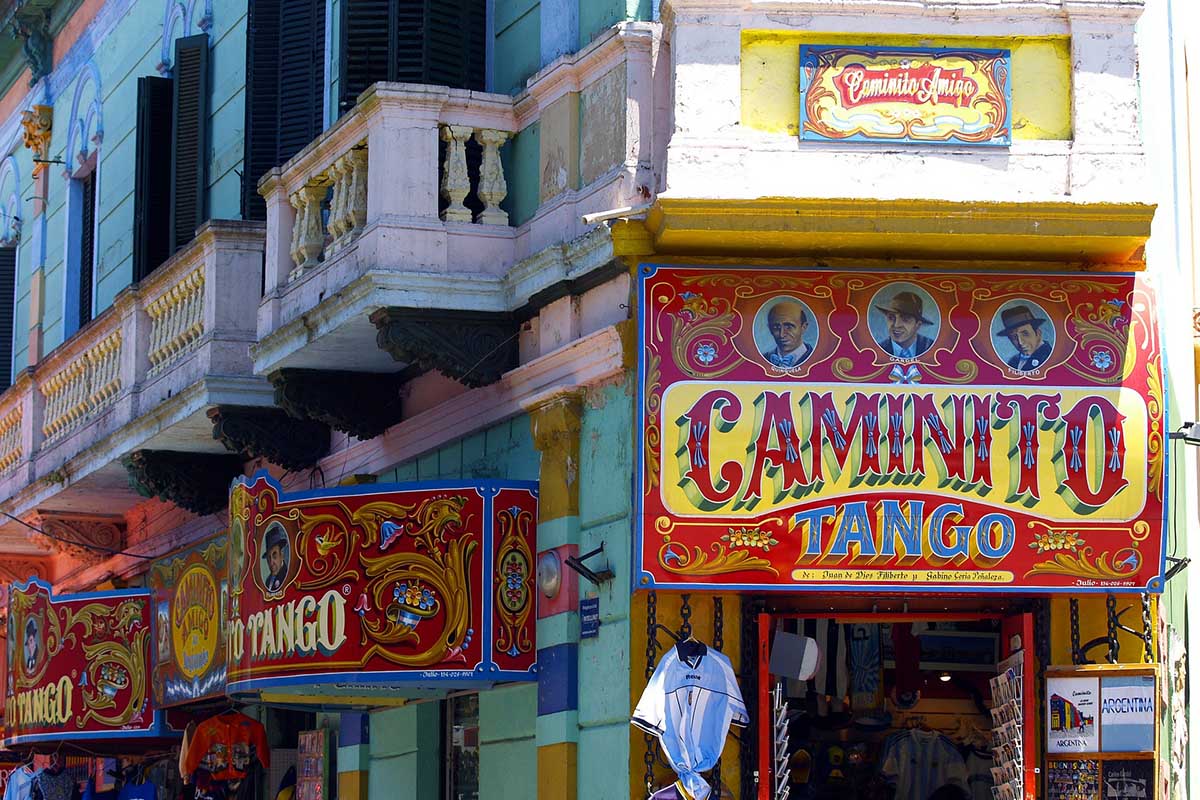
The Buenos Aires tango scene. Photo by ArtTower on Pixabay
Ah, Buenos Aires. Sometimes referred to as “Paris of the South,” this is the capital of Argentina and an absolute cultural epicenter. It’s no wonder that it’s one of the most popular places to visit in Argentina. Between the world-renowned European architecture, famous cuisine, fascinating museums , romantic boulevards, vibrant entertainment, historical sites, trendy shopping and overall “chill vibe,” this is a stop you don’t want to miss on your trip to Argentina. City lovers can easily spend a week here, but in three days you can get a nice overview of the city.
Palermo neighborhood: Monique Loayza, Director of Peru for Less, recommends this neighborhood. “Palermo is in my opinion the best for tourists who are most interested in small shops, cafes, bars, restaurants and more boutique-style hotels,” she shares. “It’s also very pedestrian-friendly. Many restaurants and cafes also have charming outdoor sidewalk/patio seating.”
San Telmo Market: Travel Advisor Michelle Talsma shares, “The San Telmo Market on Sundays in the Recoleta neighborhood will have you wide-eyed all day with its interesting things for sale. Recoleta also has an interesting cemetery, great restaurants and the downtown area has architecture that transports you to Europe“
Argentina Tours:
Teatro Colon: Travel Advisor Jackie Becker loved her tour of the theater. “I highly recommend doing the tour of Teatro Colon ,” she says. “I literally gasped when I walked into the auditorium because it was so beautiful! The tour also takes you through the underneath of the theater where costumes were/are made, explains the history of the theater, etc.”
Food: Since Argentina is famed for its beef, Loayaza highly recommends a visit to the traditional steakhouse Don Julio – a must-try for steak lovers. For a scenic meal, Becker recommends Puerto Madero, with river views and typical Argentinian dishes.
Day trip: Senior Travel Advisor Rylee Mcgowan suggests, “a day trip to Uruguay (Colonia or Montevideo), the La Tigre/Delta area and/or Estancia are great day trips from the city.”
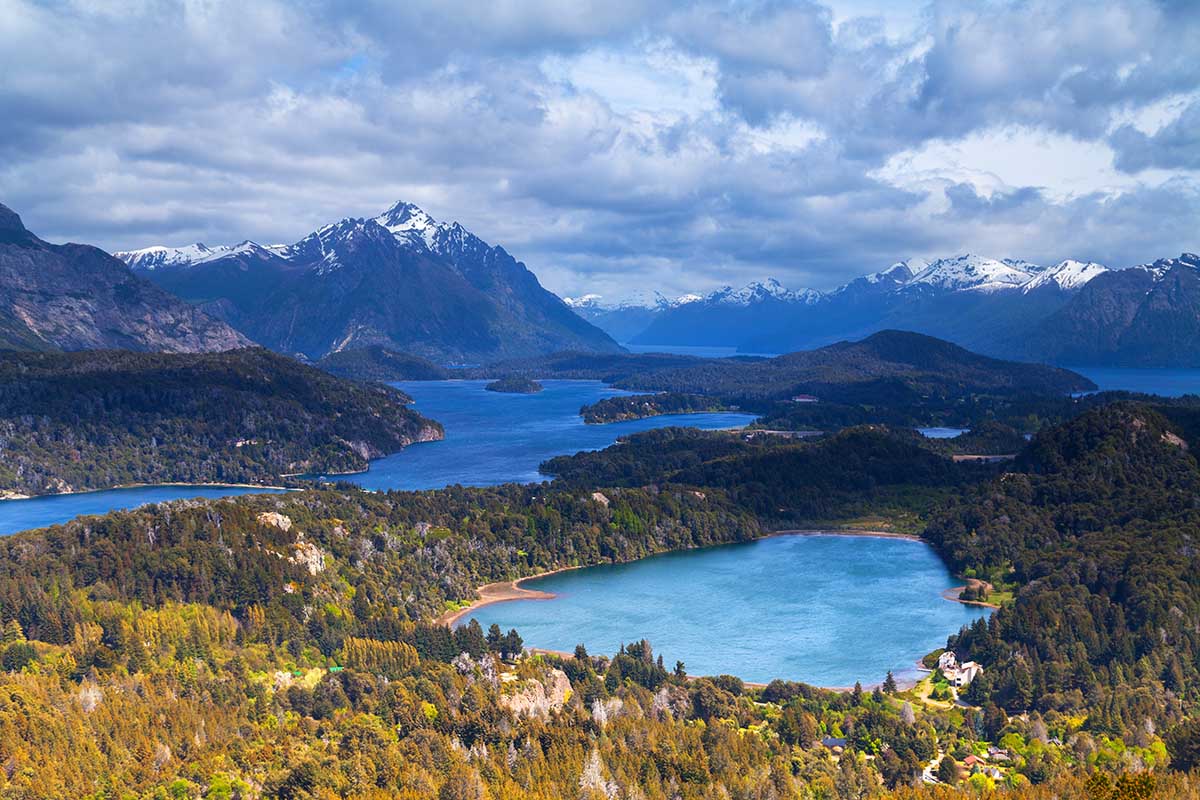
The stunning views of Bariloche.
San Carlos de Bariloche, more commonly referred to simply as Bariloche, is a picturesque mountain town in Patagonia. The town borders the icy blue glacial lake Nahuel Huapi. Loayza shares, “This was a totally gorgeous region with lots of beautiful lakes, forests and mountains. Although I haven’t been to the mountains in Switzerland I definitely think it has that feel to it. There are many parks and spots for hiking so spending a few days here if you really enjoy the outdoors is highly recommended. The town itself is very small and walkable and right on the lakeside.”
Day hike and chill. Loayza shares, “It was super easy to do day hikes, even self-guided ones, in Llao Llao Park and Cerro Otto. The trails are pretty easy and you can spend up to a few hours on them or as long as you wish. After several hours of hiking we would head over to some of the local breweries, which are spread out on the road back to the center of town – they have pretty simple, hearty food that seems German-inspired as well as good beer of course, but I think it’s just perfect for the setting and a great way to wrap up a long day outdoors.”
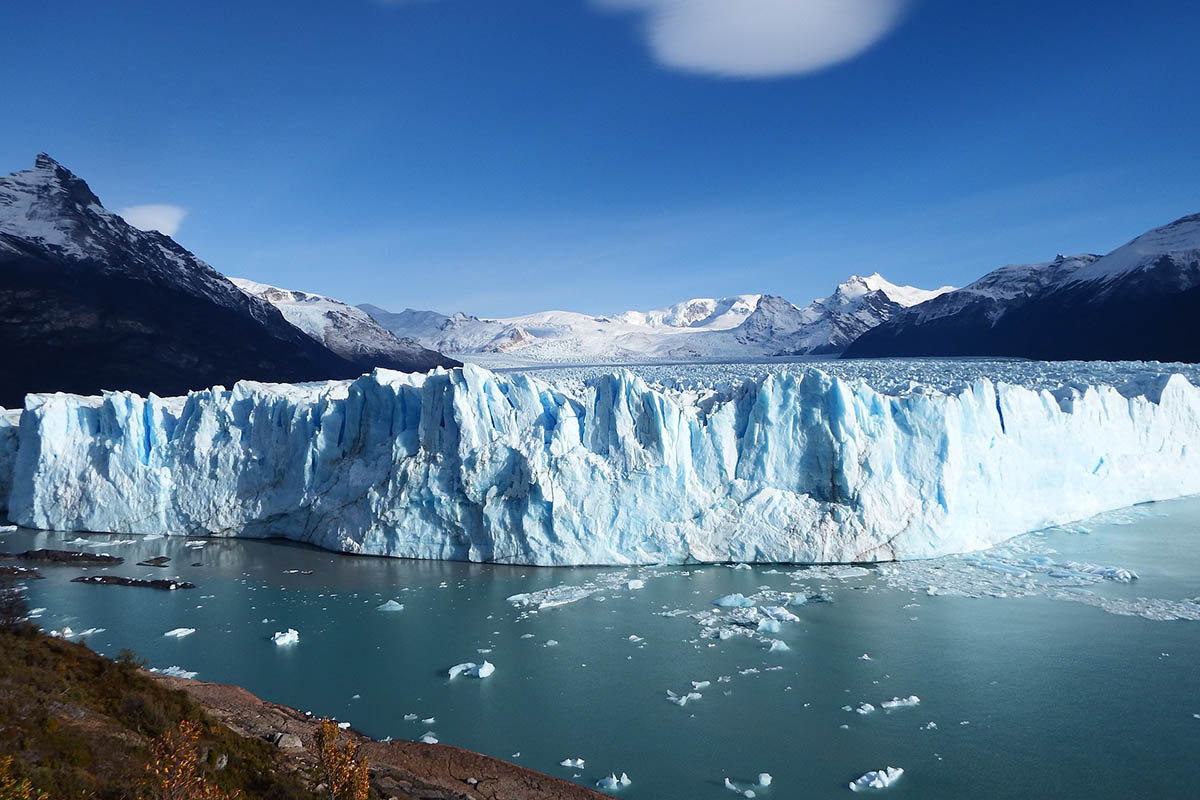
Perito Merino Glacier. Photo by Acuatro.
Located in Los Glaciares National Park, Perito Moreno Glacier is one of the most important attractions in all of Argentina’s Patagonia. The impressive glacier spans 97 square miles and is part of the Southern Patagonian Ice Field, the world’s third largest reserve of freshwater. Located about 50 miles from the city of El Calafate, tourists enjoy walking circuits and boat rides to get different perspectives of this humongous natural structure. Despite glaciers worldwide losing mass due to climate change, Perito Moreno maintains its equilibrium because it accumulates mass at the same rate it loses it. Truly ones of the most jaw-dropping places to visit in Argentina.
Big Ice. Alexandra Aguinaga, Product and Accounts Manager for Peru for Less, suggests doing the Big Ice tour. “If you don’t just want to see the glaciers from far away and want to have a unique experience, I highly recommend doing Big Ice, which is a hiking experience around the glaciers, of Perito Moreno,” she says. “The bright blue and white ice colors will just pop in your lens view, and it’ll make a long lasting memory to say you have climbed a glacier. At the end you have chocolate and whisky ice with glacier ice to give that last goodbye to Perito Moreno.”
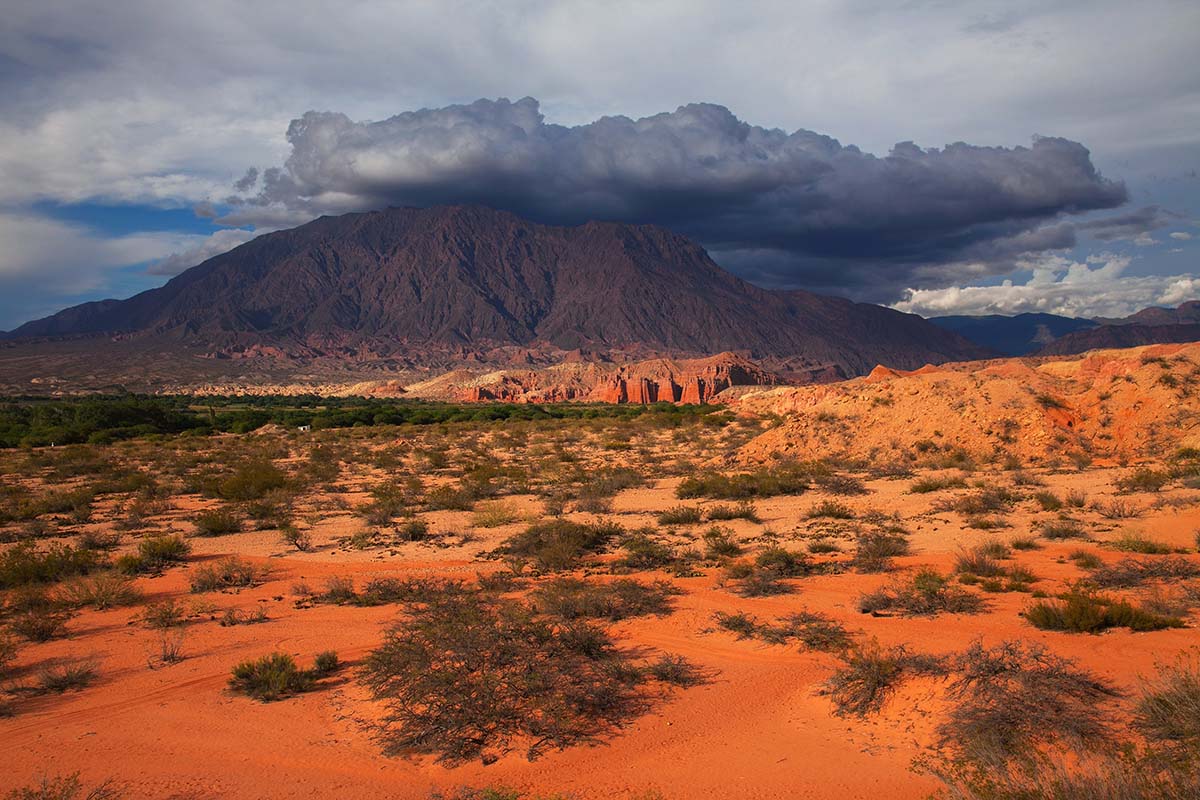
The desert landscape of Salta la Linda.
Nicknamed Salta la Linda, or Salta the beautiful, this city at the foothills of the Andes is the most popular tourist destination in Northwest Argentina. Salta is known for its beautiful colonial architecture, mountainous surroundings and…. wait for it…. empanadas! This is an excellent place to get a glimpse into Andean and Quechuan culture. Whether you’re a nature enthusiast, foodie, history lover or bar hopper you will find something to do.
Nature spots: Take a day trip to Las Salinas Grandes, where you can see amazing salt flats plus the Cerro de los Siete Colores, or Hill of Seven Colors. Also just 30 minutes away is La Quebrada de San Lorenzo, a nature reserve bursting with greenery where you can hike, horseback ride, bike ride and birdwatch.
Great views. Get an amazing birds eye view of the city at Cerro San Bernardo. This hill provides awe-inspiring vistas of the city. Here you can sample some local bites from the vendors or take a ride on the cable car that goes up and down the hill.
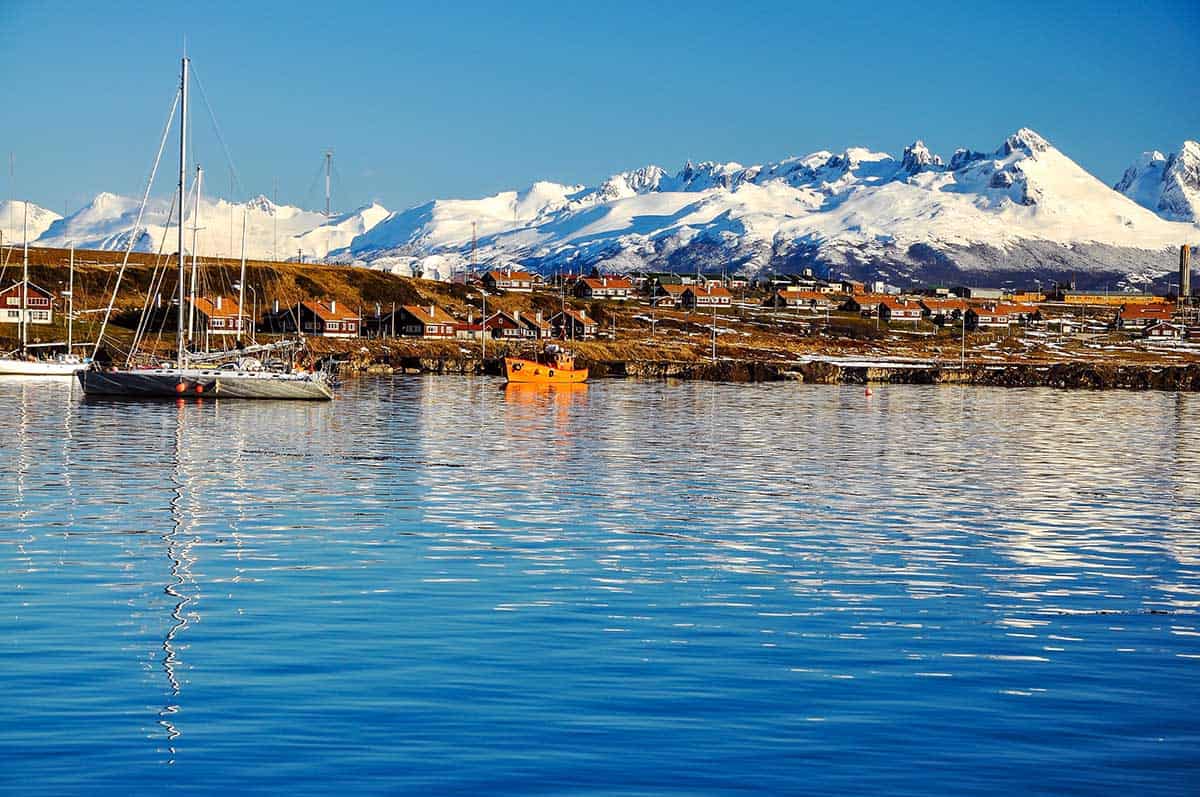
The southern Patagonian town of Ushuaia.
This icy port town is the capital of the Tierra del Fuego province of Argentina. Known as “the gateway to Antarctica,” Ushuaia is actually the southernmost town in Argentina. It is situated on the Beagle Channel, 680 miles from Antarctica. The tourist town is replete with hotels, restaurants, bars and museums. Also, since it’s at the foothills of the Andes, there are many nice opportunities to hike and partake in winter sports.
Main attractions: The main attractions of Ushuaia are Tierra del Fuego National Park, Beagle Channel, Laguna Esmeralda and Martial Glacier.
Fresh catch: Mcgowan says she recommends indulging in some super fresh king crab at a local restaurant.
Hop aboard a train. El Tren Del Fin Del Mundo, or End of the World Train, is the southernmost train in the world. It was a train for prisoners in the early twentieth century, so this is an eerily fascinating (and beautifully scenic) historic experience to round off your visit to Ushuaia.
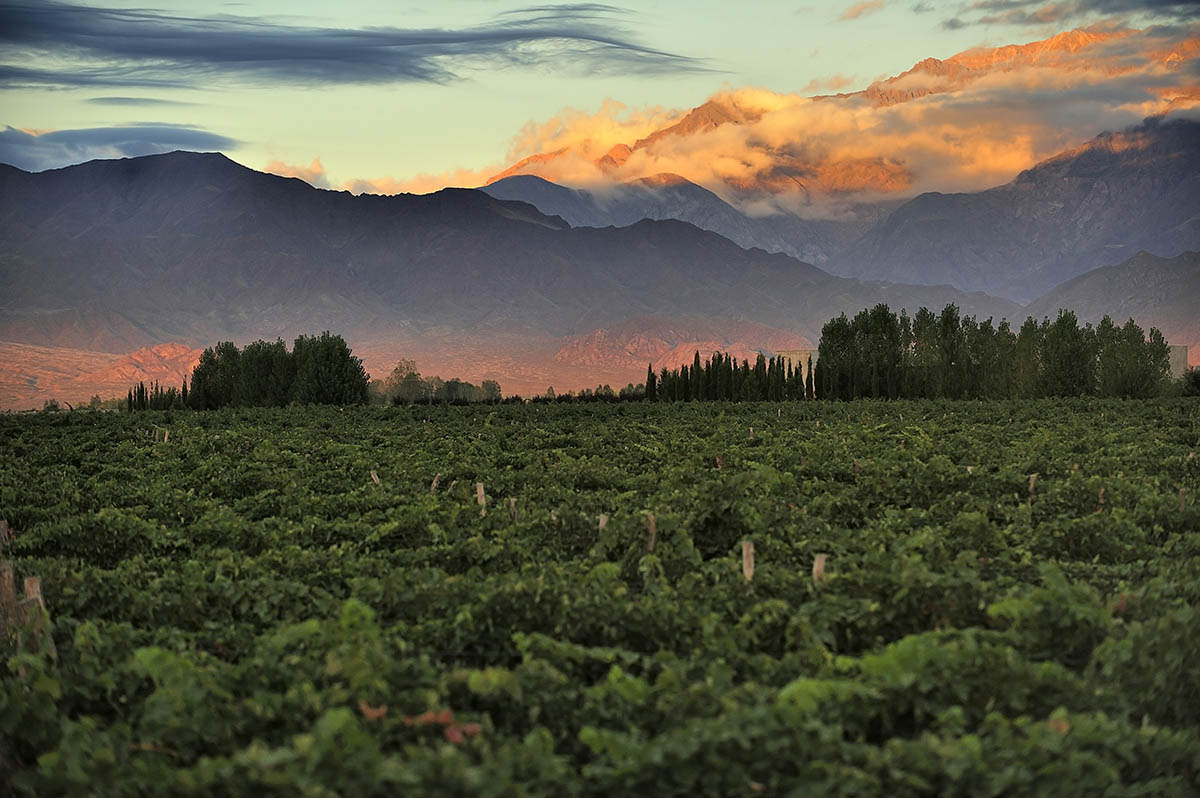
Mendoza is a wine-lover’s paradise.
Known as “Napa of Argentina,” Mendoza is a wine-lovers paradise, with a backdrop of the Andes Mountains. Set beside two main wine valleys, Valle de Uco and Lujan de Cuyo, this is the ultimate access point to Argentina’s famous wineries and vineyards. The city itself has a colonial feel and there are five unique plazas to relax in. According to Talsma, “Mendoza for me was my favorite place to visit in Argentina during my trip! The weather was perfect and there were so many adorable cafes serving fantastic cups of coffee — perfect for travel journaling.”
Argentina Tours:
Bike the Vineyards. A unique way to experience the area is by bike. You can do a half or full day tour of biking and sampling delicious wines and cuisine. It’s an excellent way to take in the natural beauty of the area while savoring the local products. Loayza says, “The landscape in the region is super pretty and there was nothing nicer than taking the time to sip good wine with great views.”
Dining. Loayza also shares that a must-try in Mendoza is Azafran restaurant , which is located on a main strip in the center of the city. “Sidewalk dining is available and I thought the food here was sophisticated and modern without being pretentious,” she says. “Since it’s Mendoza they had a very comprehensive wine list and have their own wine room where you can go to select a bottle to accompany your meal.” Also, if it’s in your budget, check out the restaurant 1884 of famous Argentine chef Francis Mallman, who was featured on Chef’s Table.
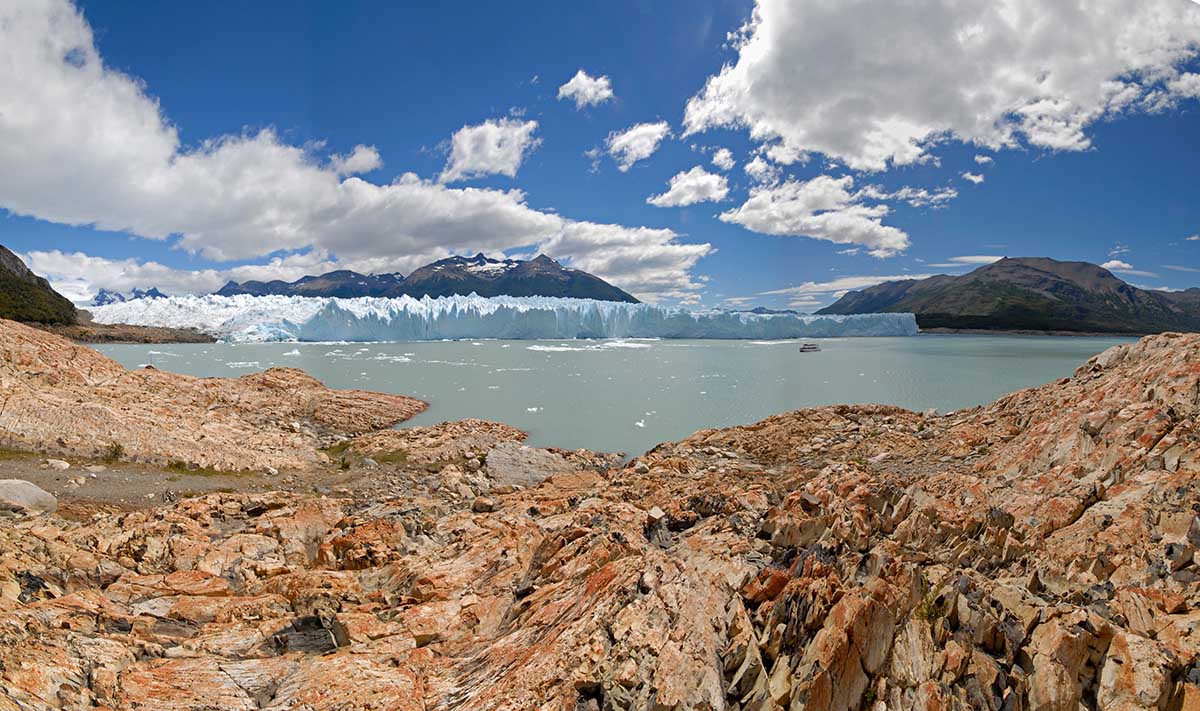
Hike the glaciers and mountains of Parque Nacional Los Glaciares.
For nature lovers, Parque Nacional Los Glaciares is a must-see. This national park is home to Perito Moreno Glacier, one of the most important sites in Argentinian Patagonia. Here you can also find Fitz Roy Peak, with trails that take you across the Southern Patagonian Ice Fields. As a plus, within the park is the largest freshwater lake in Argentina, Lago Argentino. The nearest towns to lodge in are the city of El Calafate and the small whimsical mountain village of El Chaltén.
Hike a glacier. While it’s amazing to see a gigantic glacier from the ground or a boat, there is nothing quite like hiking right on top of one! For the adventurous, there are tours that allow you to take a mini trek on Perito Moreno Glacier — so strap on your crampons and hit the ice.
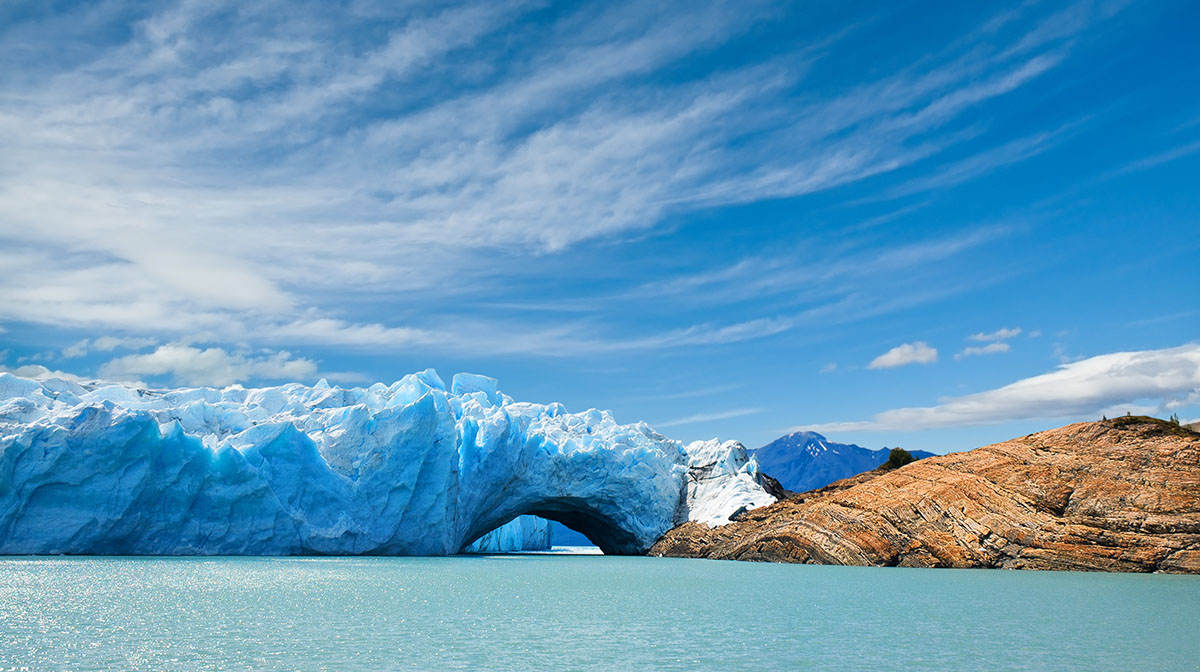
“Gateway to the Glaciers” is a nickname for El Calafate.
El Calafate is a city in Argentinian Patagonia, with easy access to the famous Parque Nacional Los Glaciares. It borders the crystal blue Lago Argentino and is known as Argentina’s “gateway to the glaciers.” Visitors come far and wide to see the 48 glaciers of the Southern Patagonian Ice Fields, particularly the Perito Moreno Glacier. This tourist hub has ample lodging and dining options, making it an excellent resting point during your Patagonian experience. McGowan says, “I found the town very charming and would have loved an extra day to see one of the nearby Estancias (ranches).”
Souvenirs. Alexandra Aguinaga, Product and Accounts Manager for Peru for Less, says “I recommend getting some jam from the Calafate berry and some black tea as a nice souvenir.”
Visit the museum. If you want to learn more about glaciers, ice and the Southern Patagonian Ice Fields, visit the Glaciarium. This gorgeous museum and interpretation center has informative exhibitions about how glaciers are formed and move, plus there is an ice bar constructed entirely of glacial ice where you can have a drink.
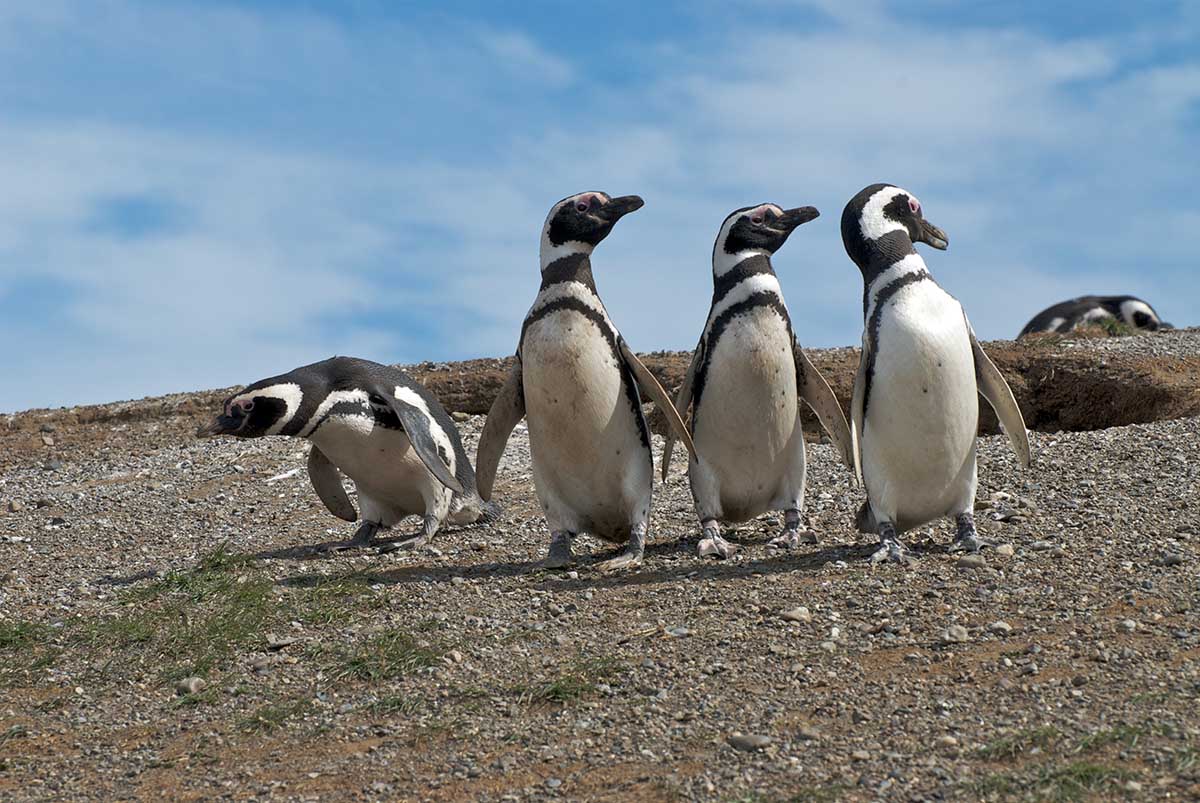
Penguins can be spotted at Tierra del Fuego National Park.
Tierra del Fuego National Park is located in southern Argentina, where the Andes Mountains plummet into the icy waters leading to Antarctica. The land beholds Patagonic forests, snow-capped mountains, glacial lakes, rivers and waterfalls. The mystical beech tree forests are home to foxes, beavers, guanacos and more. Travelers can take to one of the many hiking trails and explore this area in all its natural wonder. The nearest town to lodge and dine is Ushuaia, one of the southernmost settlements in the world. Actually, many of the natural features of the park cross into Chile, such as Fagnano Lake. For hikers, this is one of the best places to visit in Argentina.
Full day tours. Mcgowan recommends delving into a full-day nature adventure. “I’ve had lots of travelers that loved a full day in Tierra del Fuego to do canoeing/kayaking, 4×4 or hiking,” she says.
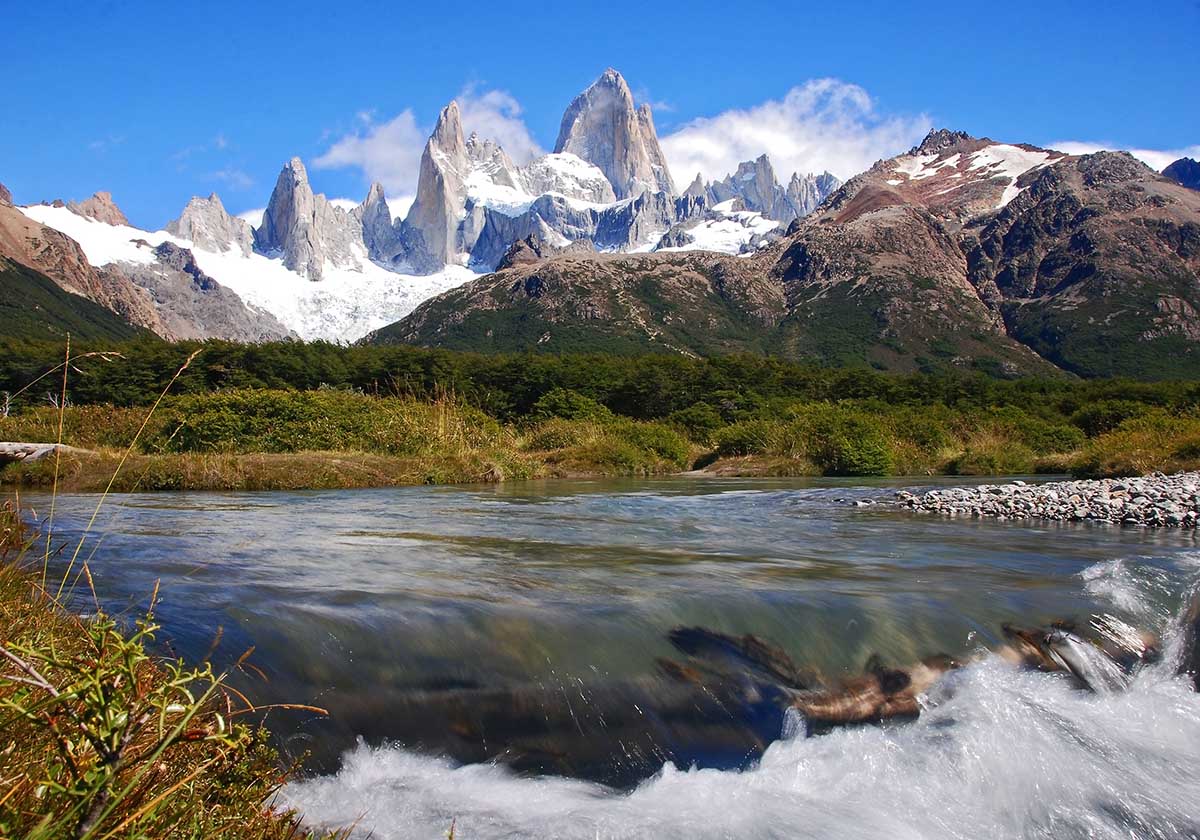
El Chalten’s Rio de los Vueltas.
El Chalten is a tiny, remote mountain village regarded as the hiking capital of Argentina. Nearby the popular Parque Nacional Los Glaciares, this town is ideal for those hikers and climbers who prefer a rustic lodging experience while exploring the marvels of Argentinian Patagonia. This little spot is home to the famous Fitz Roy Mountain, and is set at the banks of the Rio de las Vueltas. There are a handful of restaurants, bars and supermarkets in town along with some basic backpacker hostels and campsites.
Company logo. The outdoor clothing company Patagonia got inspiration for its logo from the rocky slopes of the Fitz Roy Mountain located right by the little town of El Chalten.
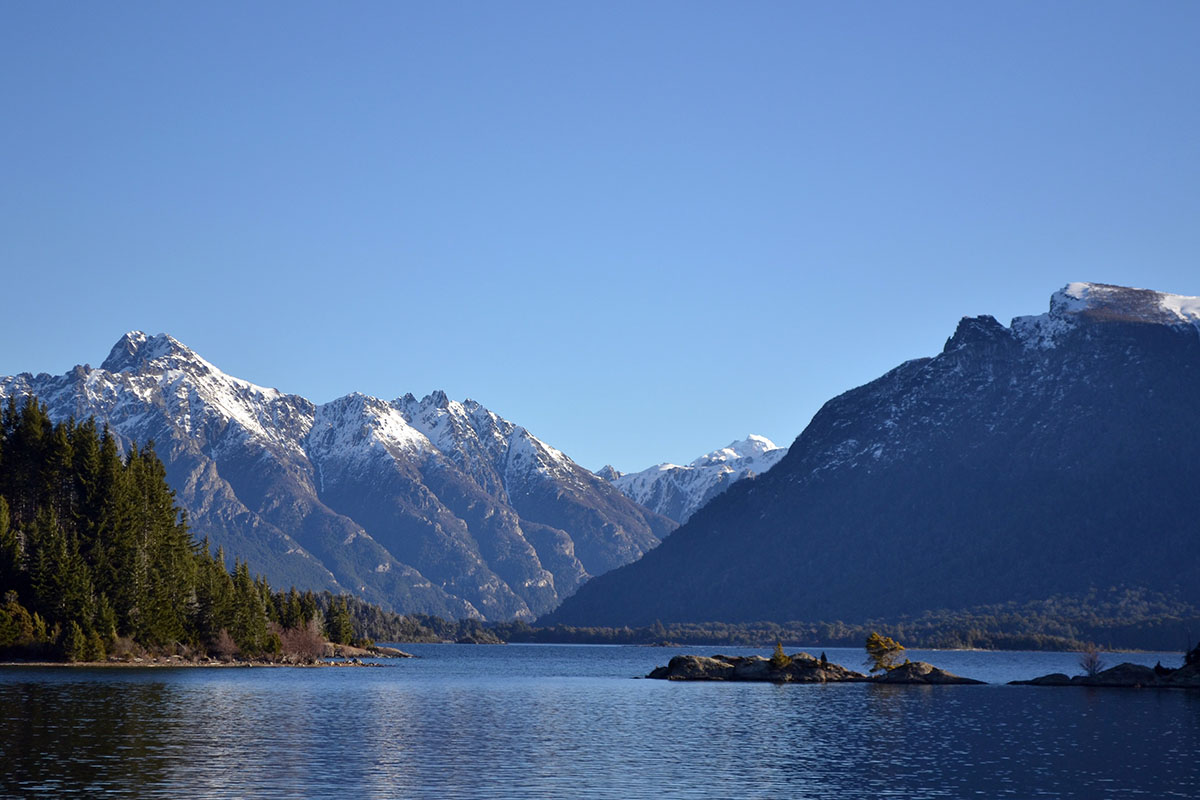
Nahuel Huapi Lake. Photo by Bruno Camargo on Unsplash.
Located in northern Patagonia, Nahuel Huapi Lake looks like it’s from a fairytale. With greenery and rugged mountain expanses surrounding, it’s located in Nahuel Huapi National Park — the oldest national park in Argentina. Edging against the mountain town of Bariloche, visitors can sail across the glacial lake or hike one of the many surrounding trails. Alternatively, they can sit back relax and marvel at it from one of Bariloche’s many lakeview cafes or lodges.
Cerro Llao Llao. This 3.8 mile out-and-back trail provides amazing views of Nahuel Huapi Lake. It is less commercialized than Cerro Campanario, yet can provide incredible views after just an hour of hiking to the summit. Pro tip: This is one of the best spots in the Bariloche area to catch the sunset.
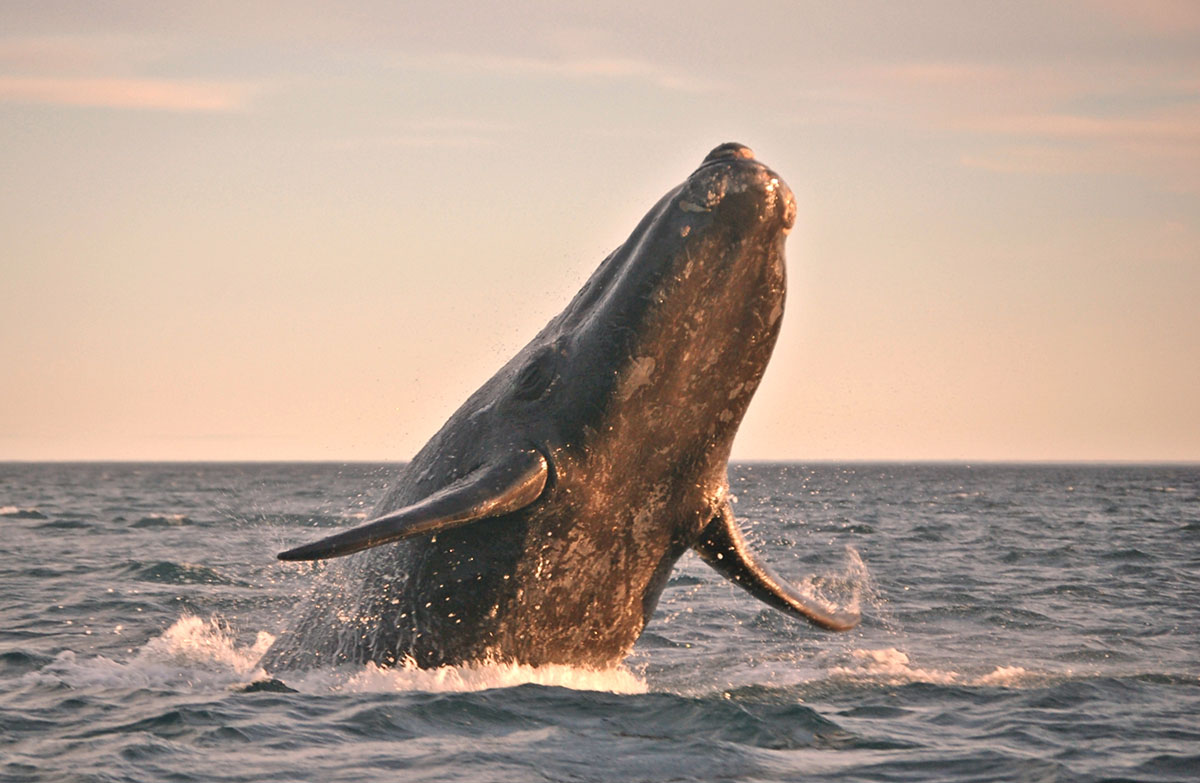
Whale breaching off the coast of Puerto Madryn.
Though you wouldn’t guess by the looks of it, Puerto Madryn is still technically in Argentina’s Patagonia. Located on the east coast of the country on the Golfo Nuevo (New Gulf), this city is known for its sand beaches and amazing wildlife viewing opportunities. It is situated near the Valdes Peninsula, known for its abundance of penguins, elephant seals and even whales breaching right off the shoreline. In fact, whale watching is the main attraction in this city and really the only notable place to spot whales in the country. The town has plenty of lodging, shopping and dining for visitors.
Optimal whale watching. Visit during Argentina’s winter, between the months of June and December, for a chance to see whales — even from the shoreline! The main whale you’ll spot in this vicinity is the Southern Right Whale, which grows to be up to 65 feet (20 m) long.
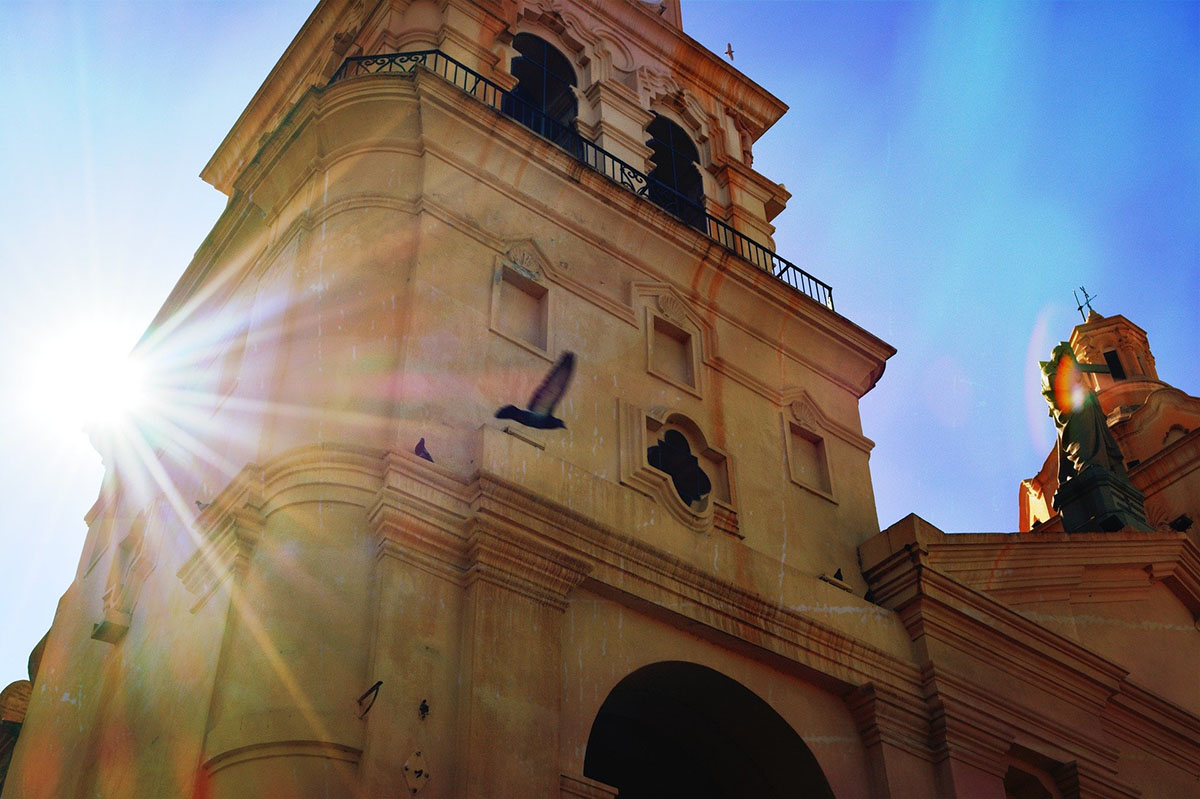
Colonial cathedral in Cordoba. Photo by Vitoolariaga on Pixabay.
We had to include Cordoba in our top 25 places to visit in Argentina. This hip metropolis with gorgeous Spanish colonial architecture throughout is too often overlooked. Cordoba is a must-visit destination for fun nightlife and artistic daylife. There are lots of bars and clubs in the Nueva Cordoba area where you can party all night. By day, check out the impressive museums, galleries, theaters and parks (like Parque Sarmiento). Or, you can hippie out in the mountains, especially the mystical Cerro Uritorco. Here there are many ritualistic ceremonies, energy vortexes and apparently even some UFO sightings. Be sure to hop over to Cordoba to creatively complete your Argentinian adventure.
Argentina Tours:
Visit a museum: Talsma says, “I really enjoyed visiting the Evita Fine Arts Museum — the collection is housed in a huge mansion so the architecture and detailing of the house was just as much a work of art as the paintings hung on the walls! I also enjoyed Museo Emilio Caraffa . This had a lot more modern pieces than Evita. It’s a huge collection of varied works.”
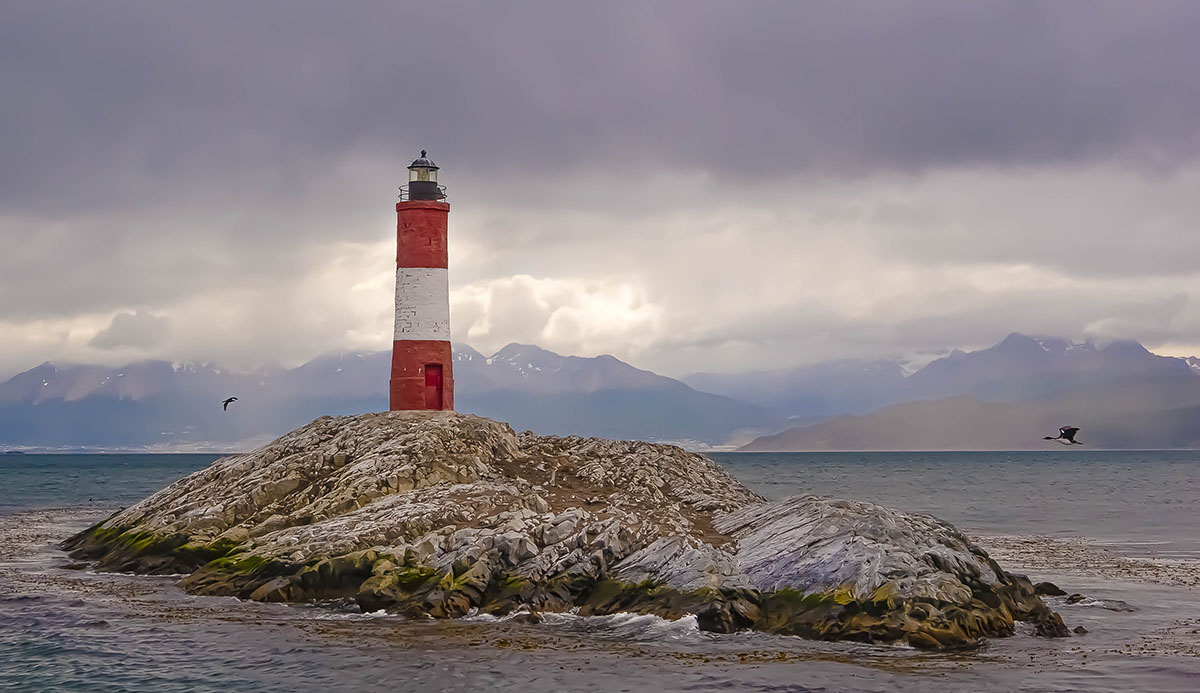
The Beagle Channel is off the southern tip of Argentina. Photo by Pedro Ramos-Gonzalez on Unsplash.
Beagle Channel is a narrow, navigable waterway all the way at the southernmost tip of South America. It is located between Chile and Argentina, right off the Tierra del Fuego Archipelago. It’s about 150 miles long and three to eight miles wide. It separates the mainland from smaller islands at the end of the continent, and leads into the South Atlantic Ocean. Short boat tours provide the opportunity to see wildlife and the mountainous shorelines of Ushuaia and Tierra del Fuego National Park. Longer boat rides can take you through the icy blue Glacier Alley and mystical forested landscapes. You’ll have a chance to spot dolphins, sea lions and many sea birds on either of these tours.
Darwin. The Beagle Channel is named as such because of Charles Darwin’s journey down the strait in the 1830s aboard the HMS Beagle. He was spellbound by the magnificent scenery, and it was the first time he had seen a glacier.
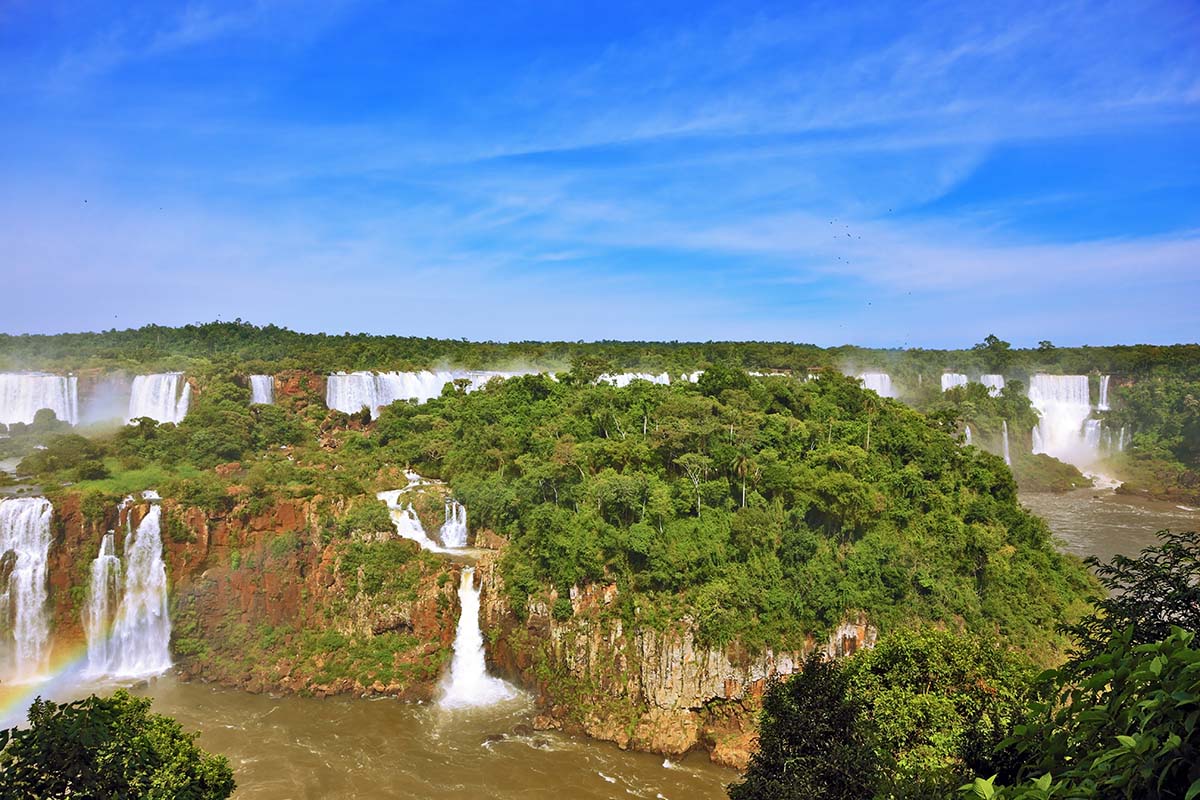
The stunning Iguazu Falls crosses from Argentina into Brazil.
Iguazu National Park is famous for its long expanse of huge waterfalls bursting from the subtropical rainforest between Argentina and Brazil. As Becker vividly describes, “ Iguazu Falls is literally one of my favorite places on earth. I cried at the falls a few times because they were so beautiful! It felt like a literal paradise watching these enormous falls and the tropical birds flying in and out of the water spray while you’re walking through these luscious green trees.” If you’re looking for lush natural beauty, this is definitely one of the top places to visit in Argentina.
Helicopter tour: Talsma recommends taking your Iguazu experience to the next level. “I really recommend splurging on some adventure activities here like a helicopter ride over the falls. Iguazu is a wonder of the world and most people only see it once in their lives so I think this kind of experience levels up a trip from awesome to incredibly awesome!”
Boat tour. Becker recommends taking a boat tour, “I really enjoyed the boat tour that takes you right up next to the falls. You just appreciate how powerful they are in a whole new way! However, you will get 100 percent soaked. Bring a change of clothes and maybe even a plastic bag to put your phone in, if you want to bring it to take pictures.”
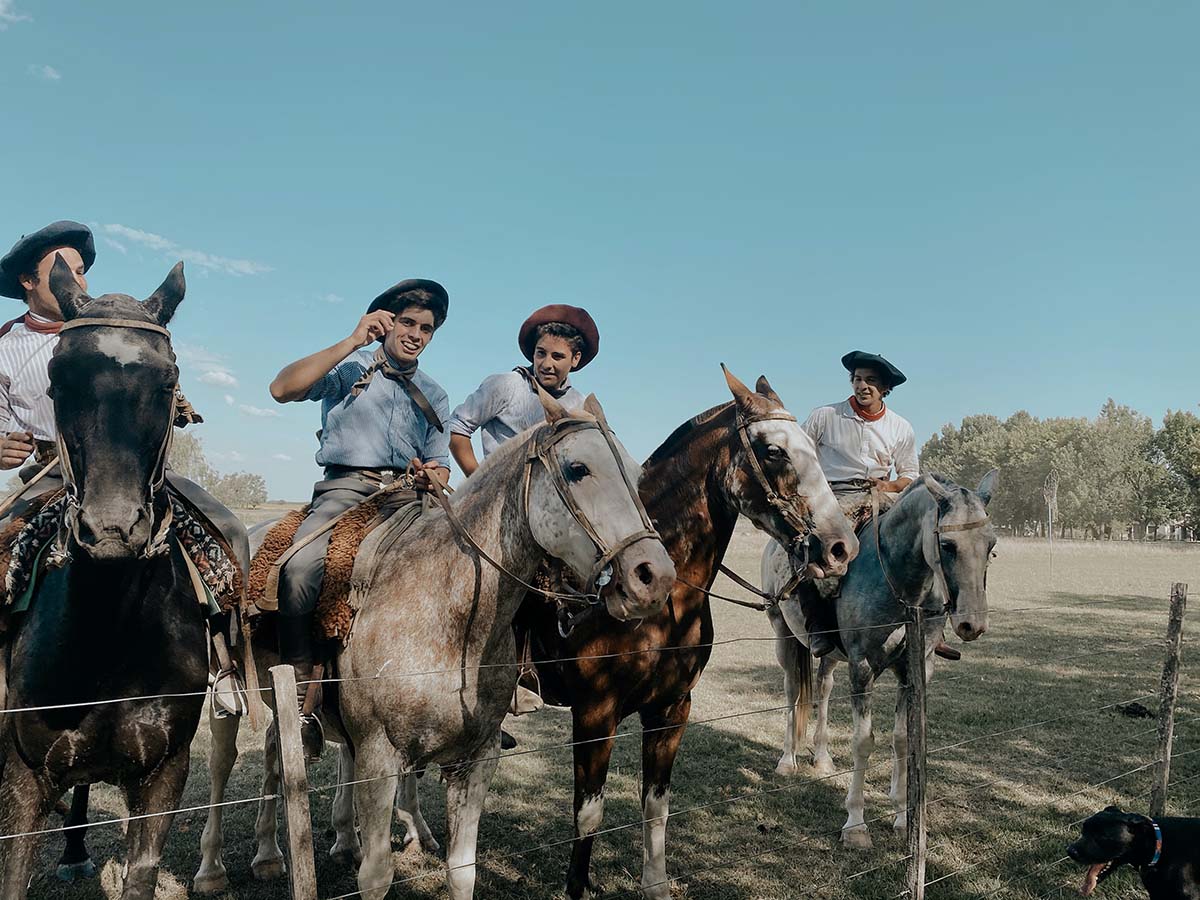
San Antonio de Areco has a strong gaucho (cowboy) culture. Photo by Nicolas Taylor on Unsplash.
Located in the Pampas region just an hour and a half north of Buenos Aires you find the small colonial town of San Antonio de Areco. It’s a great place for tourists and Argentinians alike to relax and stroll the peaceful streets. Here there is a strong gaucho (cowboy) influence, with many estancias (ranches) surrounding the town. You can find a lot of beautiful handmade silver products and saddlery to take home as a souvenir. Try an organized day tour to the town from Buenos Aires, or spend a night at one of the estancias for a unique experience.
Fiesta de la Tradición. For the full experience of San Antonio de Areco, align your trip with Fiesta de la Tradicion. This cowboy-inspired holiday takes place in early to mid-November. It features an amazing display of horseback riding, folk dancing, artisan markets and regional foods.
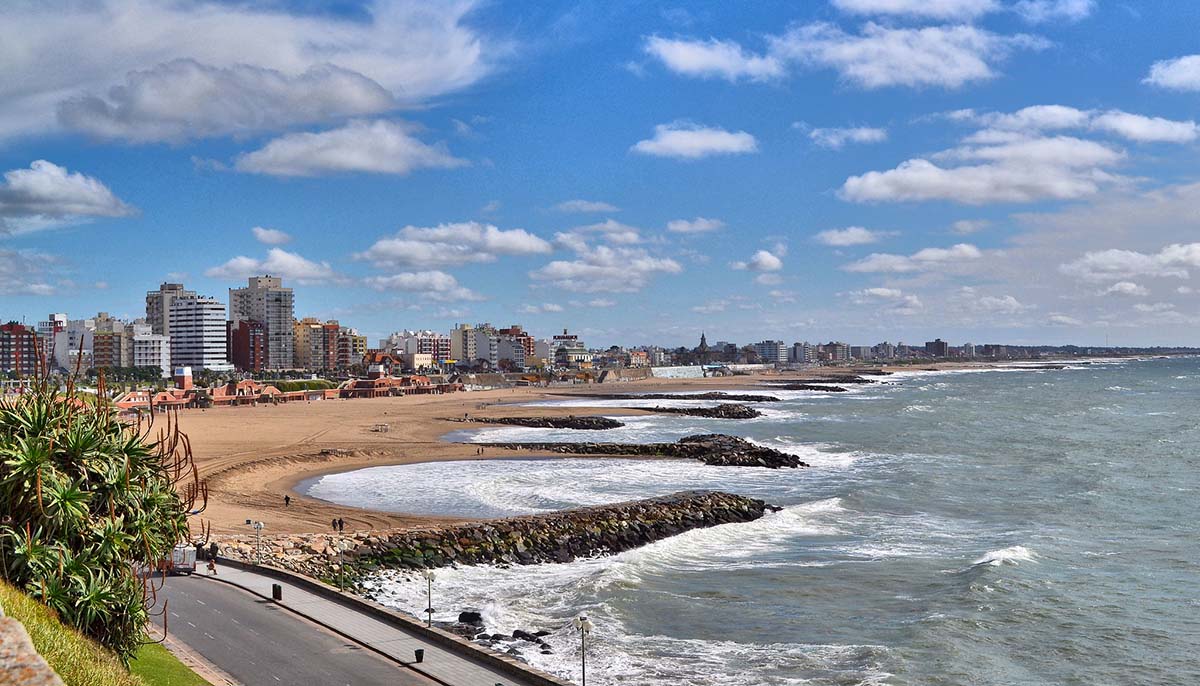
The popular beach town of Mar del Plata. Image: Mar del Plata ” by Juan Enrique Gilardi , used under CC BY0SA 2.0 / Compressed from original.
Mar del Plata is the most popular beach destination in all of Argentina. This seaside resort town has tons of hotels, restaurants, clubs, museums and other attractions to accommodate the influx of tourists that come through every summer. The beach can get very crowded during peak season (December-February), so it is recommended to reserve your spot or even rent a private tent. The city is also one of the major fishing ports of the country and has a thriving fishing industry, which can be glimpsed with a visit to Puerto Mar del Plata.
Pick your beach. For popular beaches with dining and shopping nearby, hit Playa Varese or Playa Iglesia. If you’re interested in surf lessons, visit Playa Grande. Quieter beaches with less nearby tourist attractions can be found further south at Punta Mogotes or Playa Serena.
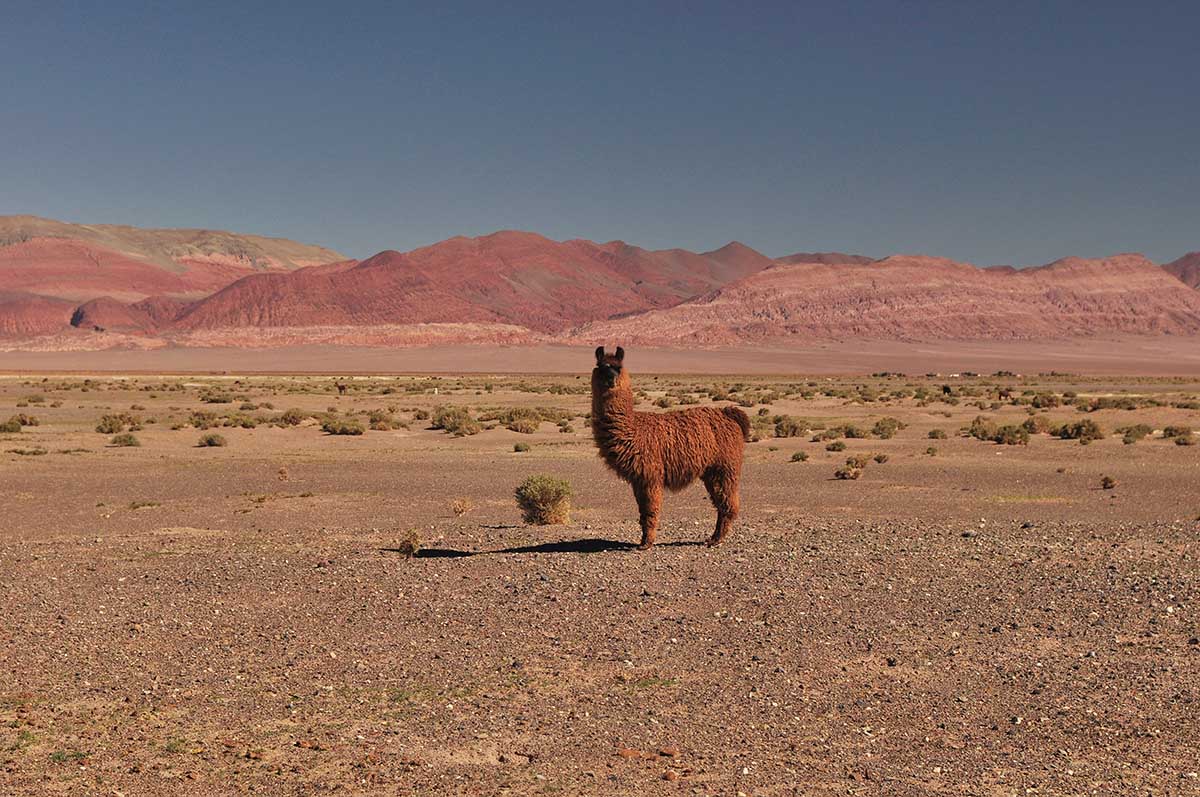
Alpaca at Antofagasta de la Sierra. Photo by javier dolfi on Unsplash.
Located in the Catamarca Province of northern Argentina you’ll find the volcanic field known as Antofagasta de la Sierra. The town is set in the Andes mountains 11,100 feet (3,400 meters) above sea level. The main feature of the area is the Antofagasta Volcano, a cinder cone volcano soaring to 13,100 feet (4,000 meters) above sea level. You can make the most of your visit by touring the volcano, along with the Coyparcito archaeological site and Lake Colorada, a red lake where you can spot groups of Andean flamingos.
Best view. For the best view, you can actually climb the Antofogasta Volcano. The 2.6 mile out and back trail is rated as moderate.
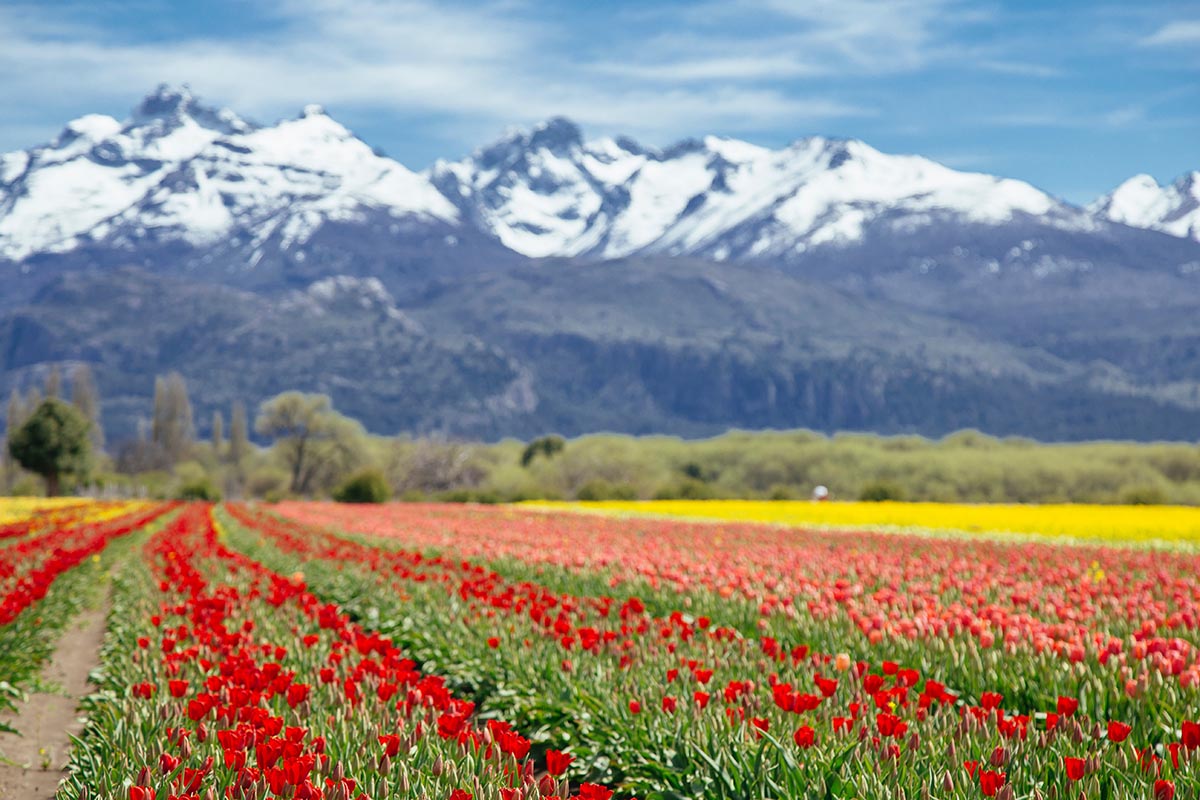
The town of Trevelin has a large Welsh population. Photo by Marcela Rogante on Unsplash.
Trevelin is a super unique town located in western Argentine Patagonia. The town has a heavy Welsh influence because it has been inhabited by Welsh people and their descendants since the mid-1800s. In fact, trevelin actually means mill town in Welsh, and the village is home to the first flour mill in the region. A fascinating blend of Welsh and native Mapuche cultures, you’ll notice the distinct blend of celtic and native names in the surrounding hills and streams. There are many peaceful lodges in the area that allow you to relax and take in the picturesque scenery on the banks of the Percy River (Rio Percy).
Visit the museum. You can visit the Regional Historical Museum, located where the first flour mill of the area once was. Here you’ll learn about the arrival, history and culture of the Welsh in Trevelin and see various artifacts.
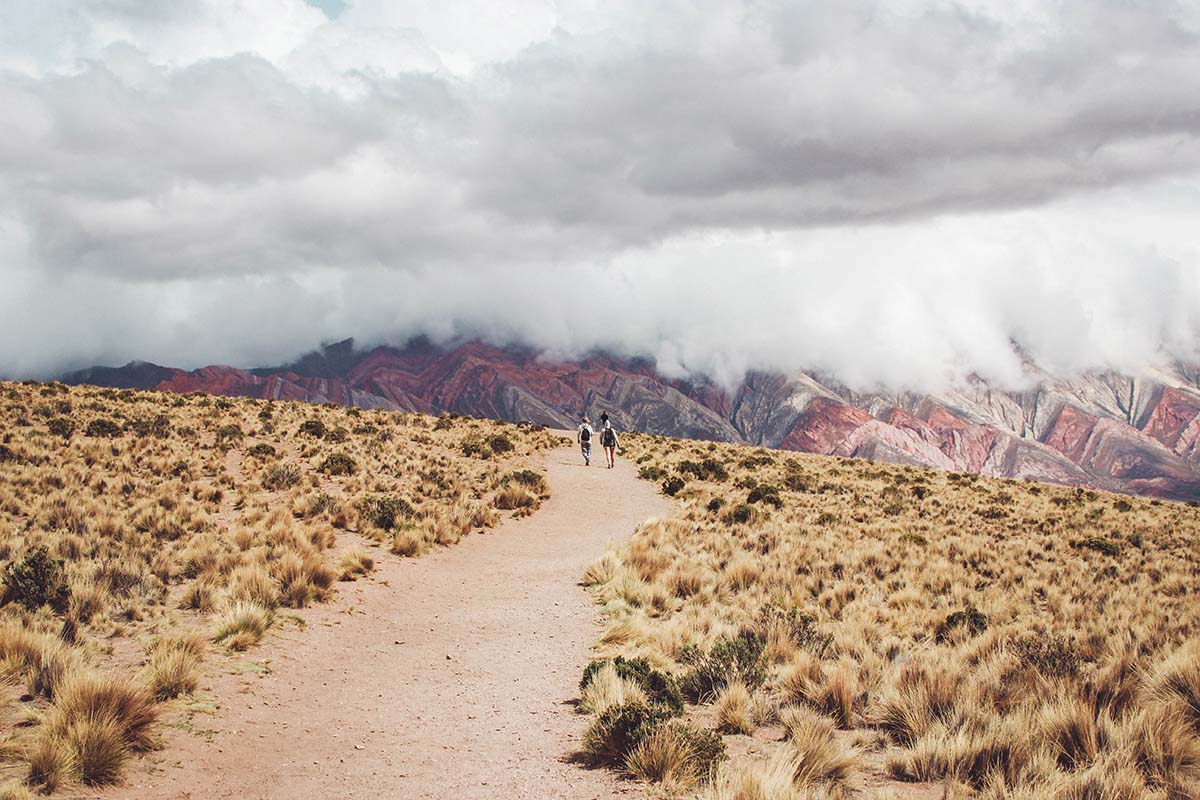
Humahuaca is a UNESCO World Heritage Site. Photo by Jonas Wurster on Unsplash.
This small village in northwest Argentina was founded in the late 1500s and is a resting point for exploring the surrounding area. Bursting with things to do, the colonial town is most commonly known for the fascinating Quebrada de Humahuaca. Located in a narrow mountain valley along the Rio Grande, Quebrada de Humahuaca is a UNESCO World Heritage Site known for its colorful natural rock formations. Notable points of interest along the 100 mile valley include Serrania de Hornocal and Cerro de los Siete Colores, or hill of seven colors. When you’re not hiking the surrounding natural wonders, you can enjoy walking the cobblestone streets, viewing the church and clock tower, browsing artisan markets or sampling local cuisine in town.
DIY. This can be a really great spot to rent a car and explore the region just you and your group. While there are excellent organized tours available, the roads here are good and there are car rentals in the area. Cruise along and stop at any of the colonial cities and natural attractions that you want.
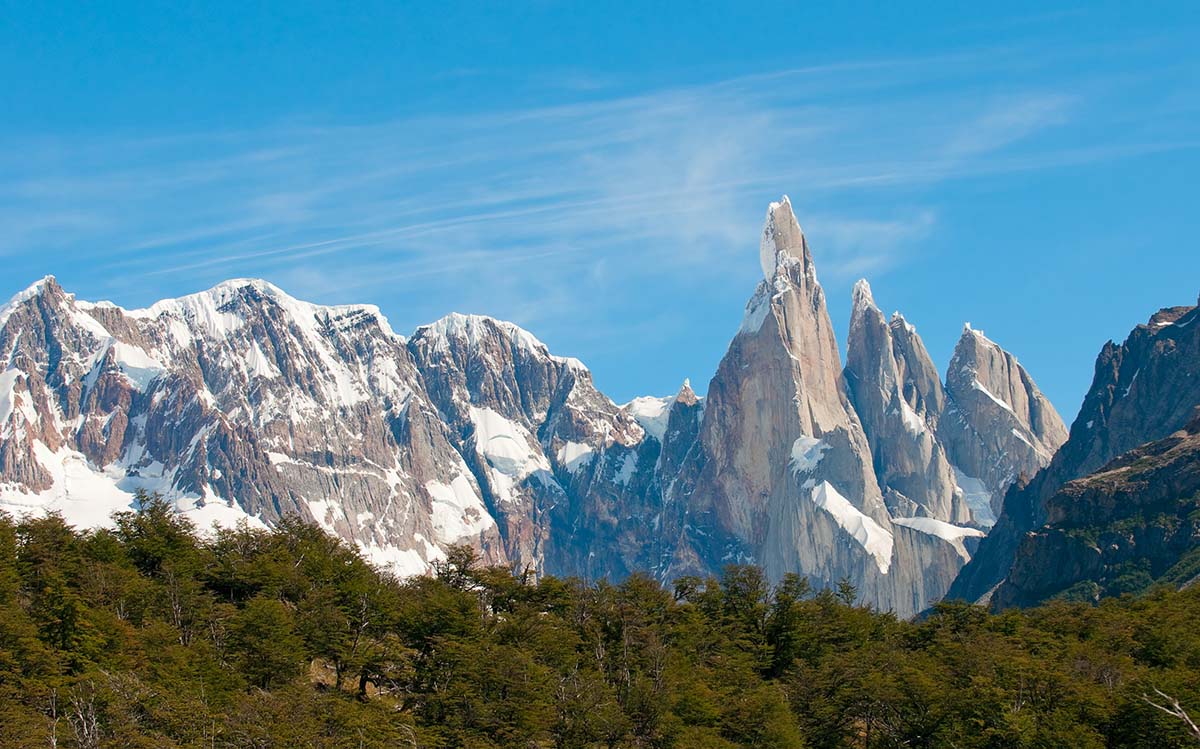
Torres del Paine National Park is in Chile, but so close to Argentina that it’s a popular stop on any Argentina itinerary.
Technically located in Chile, this National Park is so close to the border that many people visiting southern Argentina will hop the country line just to see this magnificent place. Located in Chilean Patagonia, the national park comprises winding rivers, lakes, glaciers and mountains. Here the Magellanic subpolar forests meet the Patagonian Steppes to create a natural landscape like nowhere else. There is so much hiking to do around the park that you may find your favorite trail ever here. Actually, National Geographic named this park the fifth most beautiful place in the world. And the best part is you don’t have to leave — you can stay at a hotel, lodge or refugio right within Torres del Paine National Park.
Argentina Tours:
Extra days. Loayza points out, “Spend several days here if possible. Sometimes it’s added as a one or two day visit but that just seems way too short to fully appreciate this expansive park. It’s truly a great destination if you enjoy hiking — just such a wide variety of scenery and landscapes to take in.”
All-inclusive. Loayza also suggests, “I do believe it’s totally worth splurging on an all-inclusive lodge so you can make the most of this destination via well organized tours and hikes, excellent guides, and luxury amenities (if that’s your thing).”
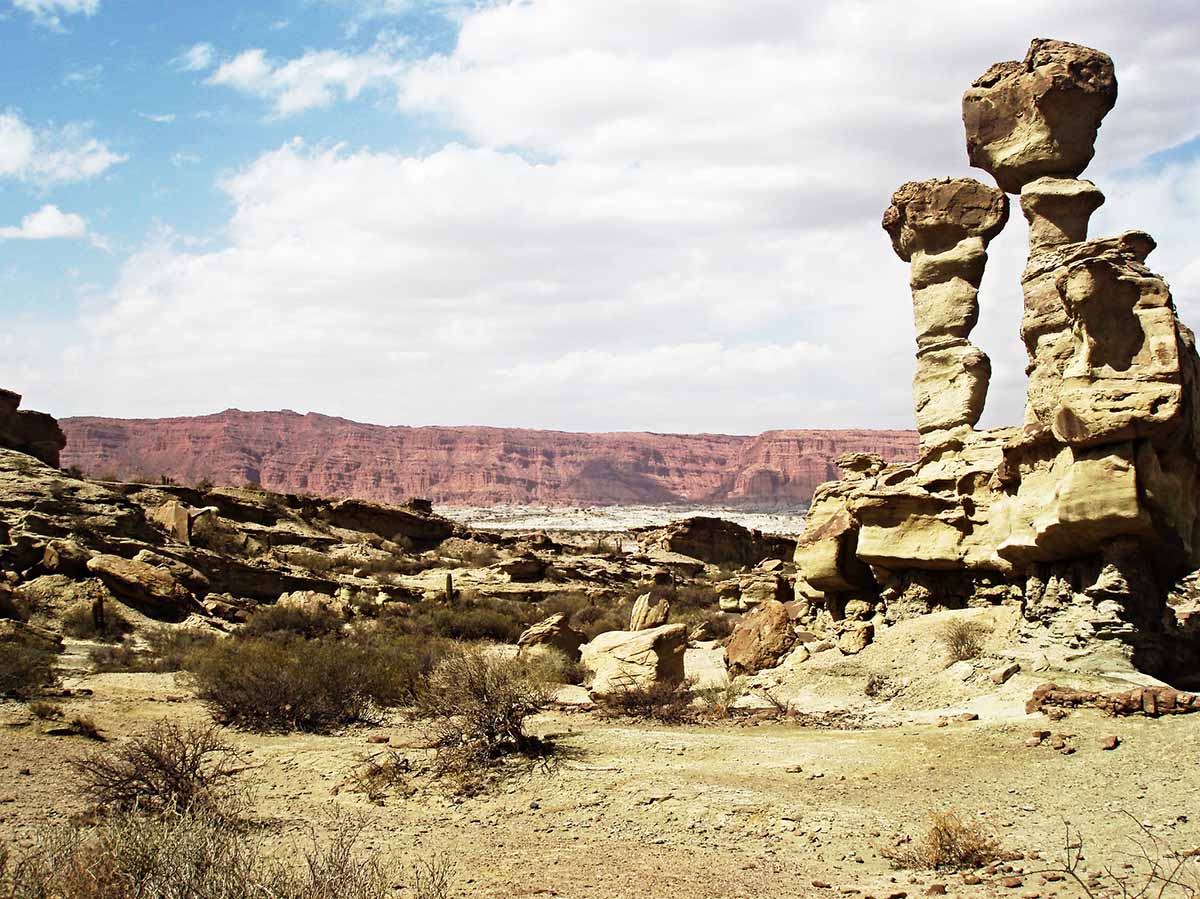
Valle de la Luna. Image: PB141166 ” by t_y_l , used under CC BY-SA 2.0 / Adjusted brightness and compressed from original.
Yes, the moon is on our list of top places to visit in Argentina. Well, not technically the moon but the landscape sure will make you feel like you’ve landed there. Valle de la Luna (Moon Valley), also known as Provincial Ischigualasto Park, is located in northwest Argentina. The dry, grey desert landscape is accented by fascinating rock formations created by millenia of wind and rain. This otherworldly place was named a world heritage site by UNESCO in 2000. Here travelers come to be awe-struck by the sensation of walking the moon or some other distant planet. The nearest village, Valle Fertil, is 55 miles (90 km) away, but there are hotels and hostels just outside this lunar oasis where you can spend the night.
Dinosaurs! This valley contains some of the earliest known dinosaur remains, from the late triassic period (approx. 230 million years ago). Fossils of rhynchosaurs and cynodonts are most prevalent.
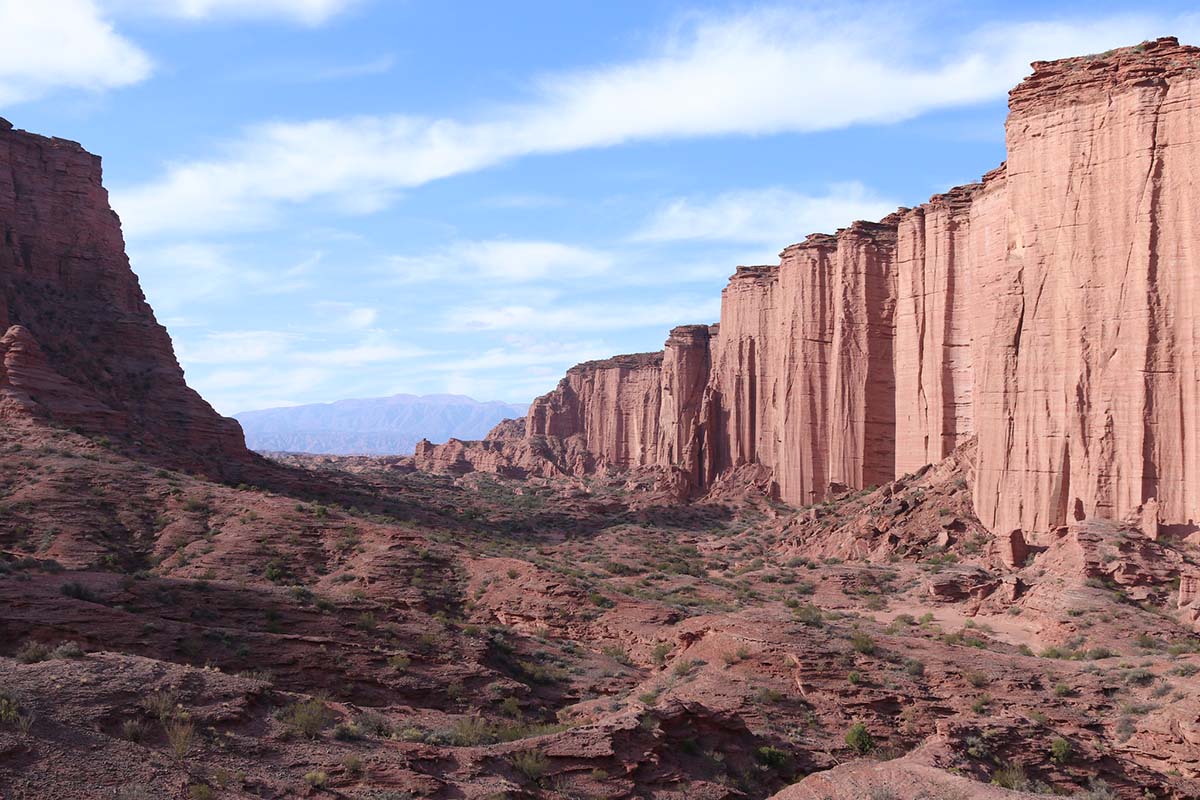
Talampaya National Park is a UNESCO World Heritage Site. Image: Talampaya National Park ” by NH53 , used under CC BY 2.0 / Compressed from original.
This national park located in Argentina’s La Rioja district was also named a UNESCO World Heritage Site in 2000 (along with Valle de la Luna). Actually the two parks border each other, though Talampaya is more known for its stunning red rock canyons and formations. This is quite an archaeological and paleontological wonderland. It beholds fossils from millions of years ago (though not as many as neighboring Ischigualasto) plus petroglyphs of ancient indigenous settlements. In the present day, you won’t find dinosaurs or settlements, but you can spot guanacos, hares, maras, foxes and condors wandering about.
Name meaning. The most accepted meaning of the word Talampaya is “the dry river of Tala, which comes from the native and extinct Diaguita language. Tala is a local plant that exists to this day (Celtis spinosissima).
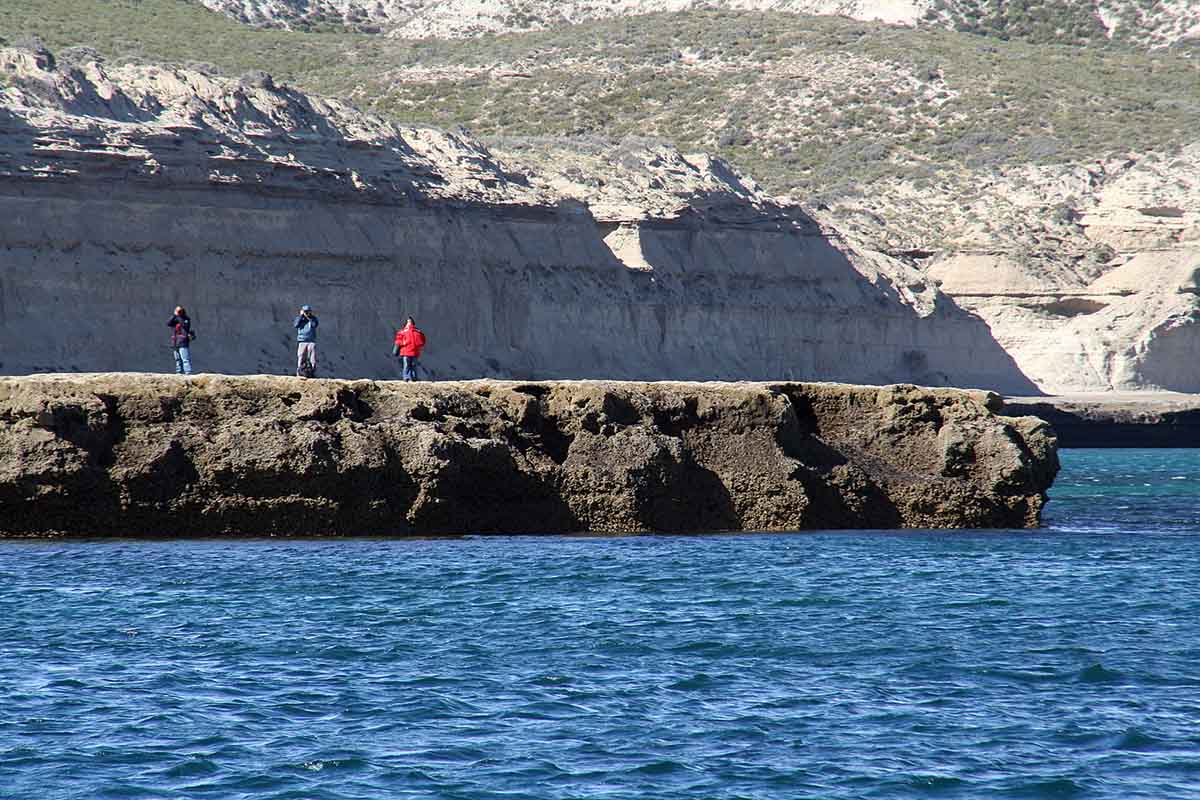
Valdes Peninsula wildlife viewing area. Image: Península Valdés ” by Qu1m , used under CC BY 2.0 / Compressed from original.
Jetting out into the Atlantic, the Valdes Peninsula is located at the northern edge of Argentina’s Patagonia region, in the Chubut Province. A crucial nature reserve, the peninsula is known for its abundance of wildlife — particularly sea lions, Magellanic penguins, elephant seals, southern right whales, orcas, dolphins and 181 bird species (66 migratory). It is one of the most spectacular places to see wildlife in all of Patagonia and it is one of the most revered animal conservation sites in the world. Some popular activities in the area include whale watching, shore cruise, nature walks to Valdes cove and more. You can truly spend a whole day exploring the peninsula, hitting destinations like Puerto Piramides, Caleta Valdes, Punta Delgada and more.
Orcas. If you are very lucky, you may have a chance to see orcas do their intentional stranding at Caleta Valdes during the months of October and November. The Valdes Peninsula is one of the best places to visit in Argentina for wildlife viewing.
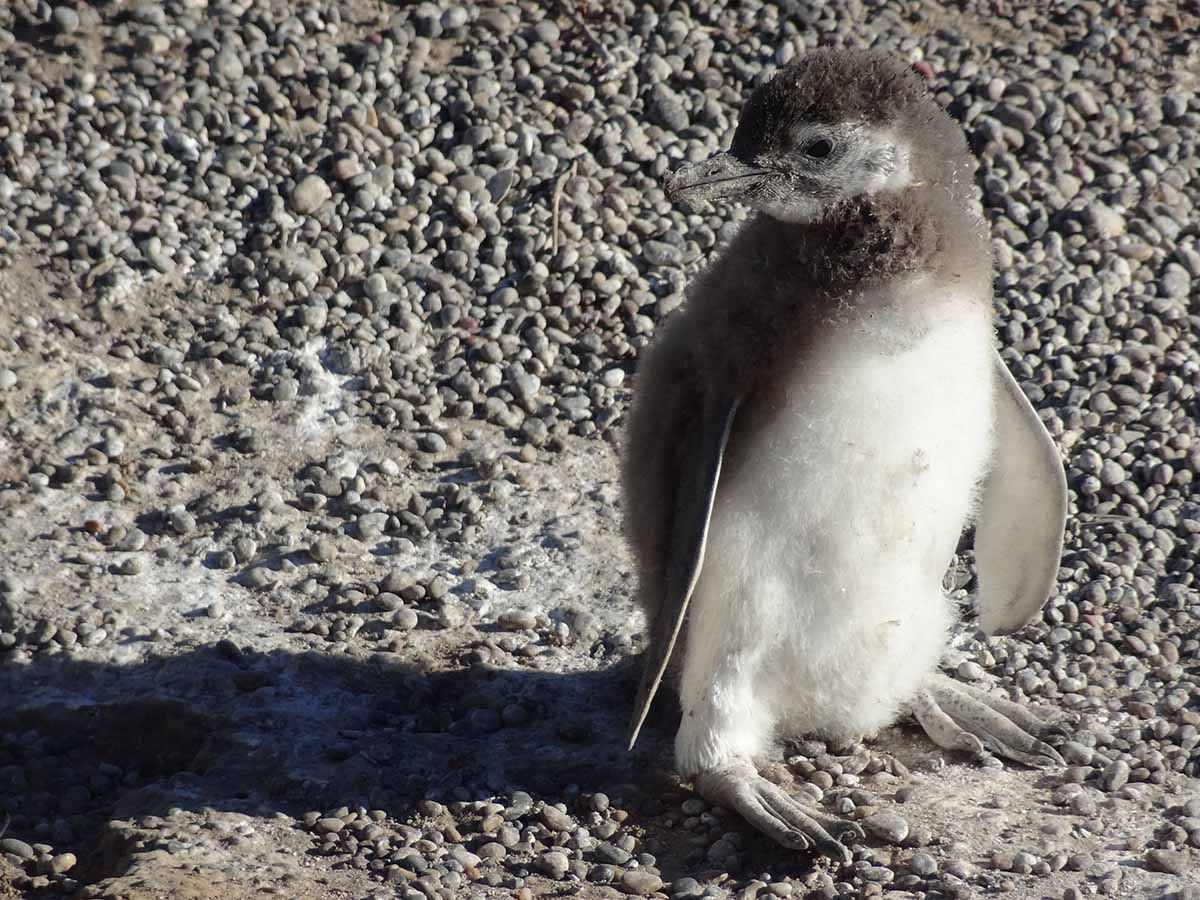
Punta Tombo National Reserve is a great place to see penguins. Photo by Sergio Martínez on Unsplash.
Another epicenter for wildlife, the Punta Tombo National Reserve is also located in the Chubut province. The wildlife sanctuary is known for its Magellanic penguin colony and has been protected since 1979. The peninsula itself is about 1.3 miles long and is a part of a marine national park at Golfo San Jorge. Seeing these penguins is a highlight during many animal lovers visit to Patagonia. In fact, you can even do a “walk with the penguins.” During this experience you hike by these waddling little cuties in their natural habitat. You would want to avoid visiting between May to August as this is when the penguins are out to sea.
Avoid crowds. To avoid crowds, you will want to visit Punta Tombo National Reserve on a day when there is not a cruise ship in Puerto Madryn. Most of those passengers make their way to the reserve to see the penguins so opt for a cruise-ship free day for a more peaceful visit.
Ready to visit Argentina? Jot down your dream destinations in this amazing country and our expert travel advisors can help plan your ultimate Argentina vacation.


Email: [email protected]
Sign up to receive our newsletter for great articles, stunning photos, and special deals.